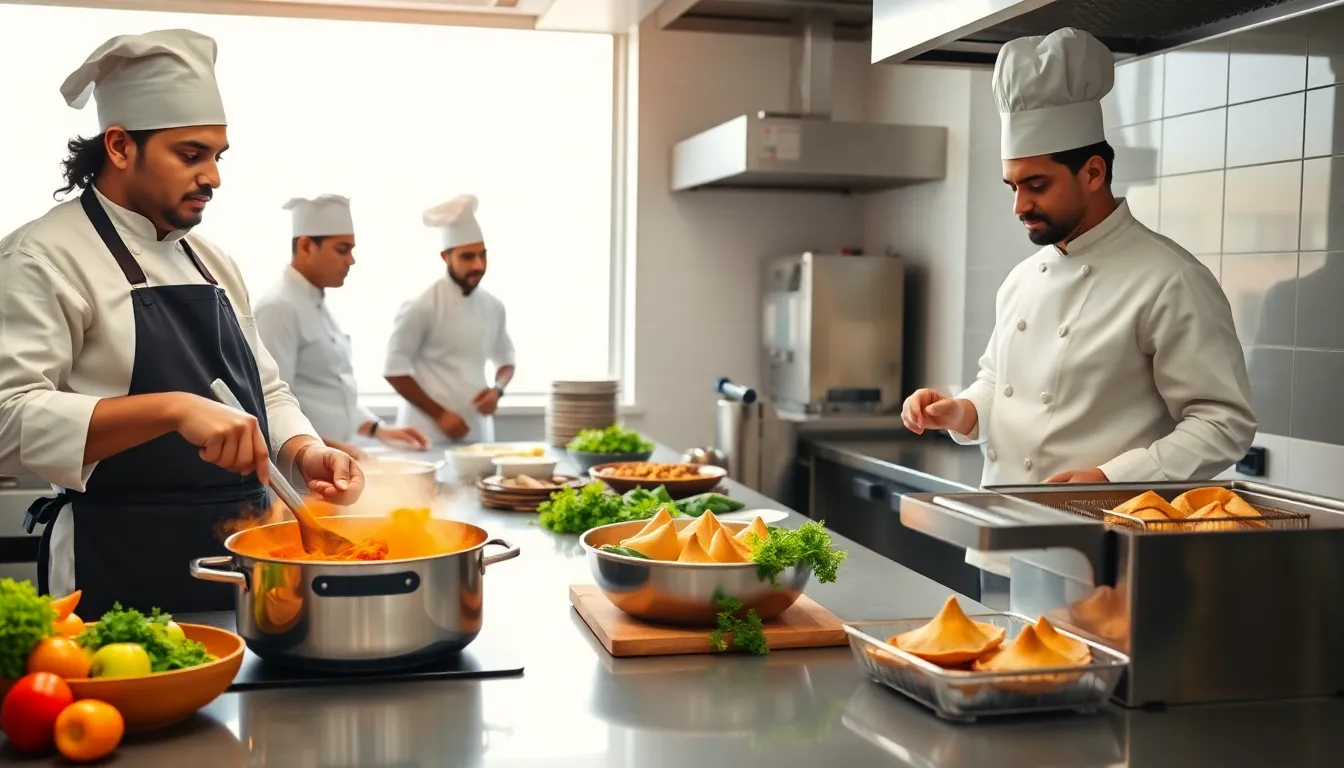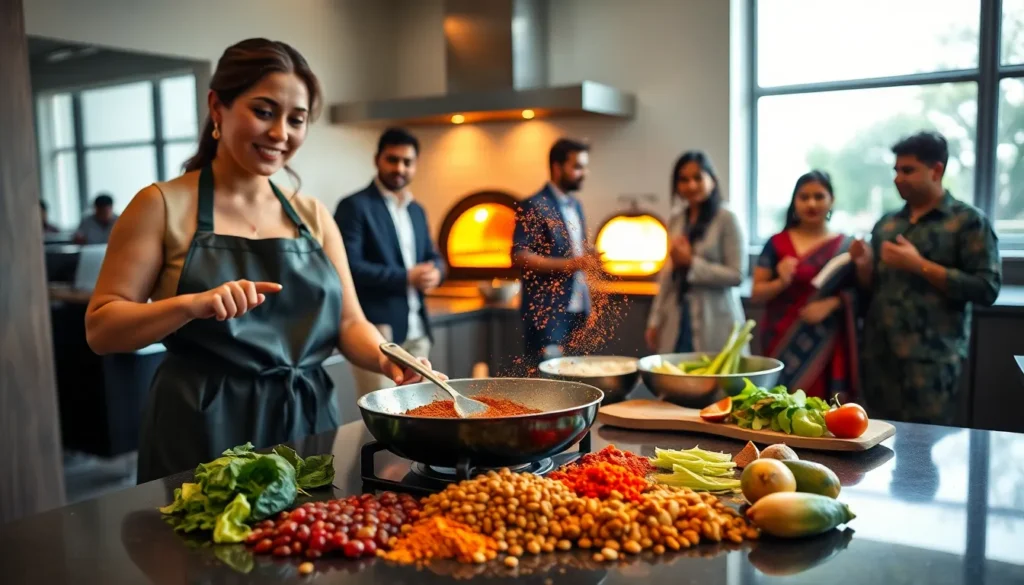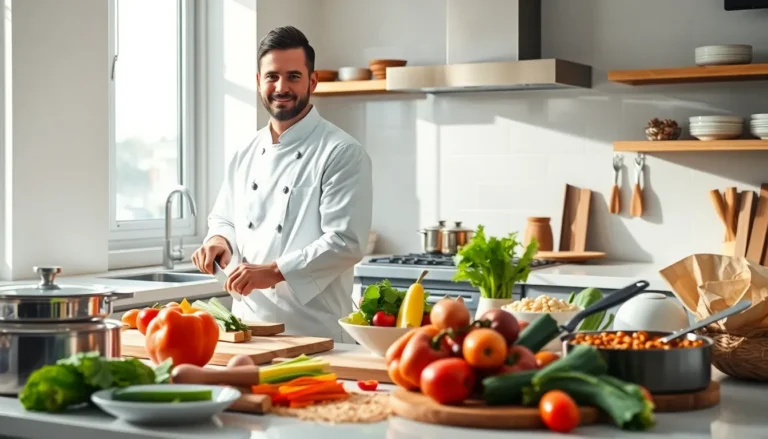Table of Contents
ToggleWhen it comes to cooking, Indian cuisine stands out like a bright peacock in a flock of pigeons, doesn’t it? With its vibrant flavors, diverse ingredients, and a plethora of cooking techniques, Indian cooking is both an art and a science. This article will explore the various techniques that not only bring out the best in the ingredients but also create magical dishes that tantalize the taste buds. Buckle up, because this culinary journey is about to spice up your cooking repertoire.
Overview of Indian Cooking Techniques

Indian cooking techniques are as diverse as the country’s culture. Each method has its unique charm, celebrated across regions. From frying to slow cooking, Indian cuisine promises richness in taste and texture. Central to this culinary journey is a deep-rooted understanding of both the ingredients and the techniques applied to them.
The core of Indian cooking revolves around the balance of flavors, textures, and aromas, often achieved through several distinct cooking methods. Notably, these techniques have been passed down through generations, revealing much about India’s history and traditions. They are not merely about preparing food, but about creating a cultural experience.
Whether in the bustling streets of Delhi or the serene villages of Kerala, Indian cooking techniques bring communities together. They share recipes, techniques, and stories, creating a tapestry of flavors that is uniquely Indian.
The Importance of Spices in Indian Cuisine
Spices are the lifeblood of Indian cuisine. They have the power to transform ordinary dishes into culinary masterpieces. But why are they so important?
Historically, spices contributed not only flavor but also medicinal properties. Black pepper, turmeric, and cardamom have long been used for their health benefits. This rich tapestry of spices offers a beautiful complexity that distinguishes Indian food from others.
Also, spices create depth. A pinch of garam masala can elevate a simple lentil soup into a fragrant delight. Techniques such as tempering, where spices are sautéed in oil, release essential oils, enhancing both flavor and aroma. Without spices, Indian cooking would lose its defining character, akin to a painter without their color palette.
Popular Cooking Methods in Indian Cuisine
Several cooking methods are prevalent in Indian cuisine, each bringing its unique flavor and texture to dishes:
1. Sautéing (Tadka)
Sautéing, known as tadka, is a technique where spices are cooked in hot oil. This allows spices to release their essential oils, resulting in a flavor-packed base for dals and curries. Crisp, fragrant, and engaging, tadka is often considered the heart of many Indian recipes.
2. Steaming (Bhaapo)
Steaming, or bhaapo, preserves nutrients and flavors in vegetables and dishes like idlis. This method is healthy and results in soft, fluffy textures that complement spicy curries perfectly.
3. Frying (Talna)
Frying, or talna, is another widely-used method in Indian kitchens. Deep-fried snacks like samosas and pakoras are irresistible, crispy on the outside yet soft inside. The frying technique adds richness, creating textures that highlight various ingredients, from lentils to potatoes.
4. Slow Cooking (Dum)
Dum cooking signifies slow cooking in a sealed pot to retain flavors. This technique is often used for biryanis, allowing spices and ingredients to meld beautifully over several hours. The result is tender, aromatic dishes that invite you to savor every bite.
5. Grilling (Tandoori)
Tandoori cooking involves grilling marinated meats and breads in a clay oven, or tandoor. This method infuses food with a smoky flavor, enhancing its deliciousness. Tandoori chicken is iconic, showcasing how grilling changes the very fabric of flavor in Indian cooking.
Regional Variations in Cooking Techniques
India’s vast landscape allows for a variety of cooking techniques that reflect regional ingredients and cultures.
In the north, heavy use of cream and butter characterizes dishes, with techniques like slow cooking to create rich gravies. Moving to the south, you’ll encounter steaming methods prevalent in coastal states, where seafood takes center stage.
Eastern India embraces fermentation, giving rise to pungent dishes, while western states showcase a blend of roasting and grilling techniques. Each region contributes its culinary heritage, making Indian cooking a delightful potpourri of flavors and techniques. The beauty is in how these regional variations harmonize to create a national cuisine.



